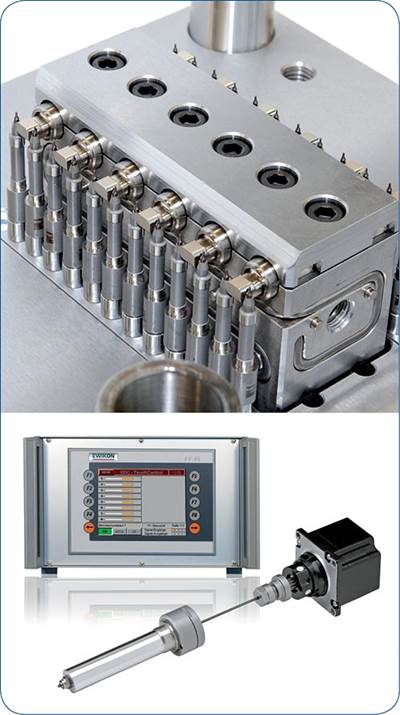Mill-and-mail moldmaking no more
“The days of just putting a mold on the shipping dock and hoping the customer comes and pats you on the back are long over.”

That observation on the new selling cycle for moldmakers came from Bill Muldoon, cofounder and president of Clinton, Mass. based NyproMold, speaking at Engel’s recent Medical Day event from its technical center in Corona, Calif. I suppose if shoot-and-ship molding is gone, mill-and-mail moldmaking’s days figured to be numbered as well.
NyproMold, which along with Nypro became part of Jabil in 2013, now operates two sites with 160 employees and annual mold build of 200 tools/year, according to Muldoon, who spoke about how the adoption of the latest technologies helps his company satisfy the increasingly challenging demands of customers.
If you’re tired of the spiel about how “only shops that invest in the latest technologies can compete,” I’ll spare you, but will say if you want a real-life example of why it’s true, check out NyproMold.
DMLS, 5-axis machining, CT scanning…
The company boasts direct metal laser sintering (DMLS) capabilities, but beyond “rapid manufacturing” hype, Muldoon showed its practical application, including a “hybrid” mold core featuring an H13 steel base joined to a DMLS top section, specially designed for maximized cooling. DMLS isn’t the only conformal cooling option the company can offer. NyproMold also applies 5 axis drilling and vacuum brazing as cheaper alternatives to getting cooling as close as possible to a cavity.
With regards to 5-axis machining, Muldoon answered his own question, when he asked the audience, rhetorically, “What has changed in the mold making industry over the last 10 years,” before saying: “The machines are definitely getting better.”
The simplest but perhaps least obvious benefit of 5-axis machining? The ability to work on five sides of a component at once, eliminating the need to flip around work pieces, reaffixing and realigning as you go. NyproMold likes the technology enough that it now has five 5-axis units to work with, with one dedicated to producing graphite electrodes for EDM.
The company spent over one year tuning that machine, getting tolerances to within ±. 0002 inch. The precision means the machine can run unattended for 130 hours/week.
Finally, taking the cue from several top customers that deployed the machines in their quality labs, NyproMold invested in a CT scanner, which it applies in its mold validation process, among other uses.
Non destructive and without the need for fixtures, the device takes 1,200 x-rays of the tool while it rotates, assembling a 3D point cloud in about an hour. CAD models of the part are then overlaid unto the 3D point cloud, instantaneously showing variations between the requested design and the finished tool cavity.
Beyond that, NyproMold is able to use the scanner to understand part assembly, showing all the internal components and layout of a product without having to tear it apart. Under the same concept, the CT scanner can reverse engineer a part if the original CAD file has been lost.
This technology has proven so useful, NyproMold actually started a separate scanning business called 3D Pro Scan. “You can take and use this as an upfront inspection service,” Muldoon said, “and change first article inspection into a validation.”
This adoption of technology, like love, as the saying goes, means NyproMold never [or at least rarely] has to say ‘Sorry’ to its customers.
“Our goal is to really shrink down the number of deviations you have to ask for,” Muldoon said. The result is expanding business.
Related Content
Back to Basics on Mold Venting (Part 1)
Here’s what you need to know to improve the quality of your parts and to protect your molds.
Read MoreBack to Basics on Mold Venting (Part 2: Shape, Dimensions, Details)
Here’s how to get the most out of your stationary mold vents.
Read MoreWhat You Need to Know About Leader Pins and Bushings
There’s a lot more to these humble but essential mold components than you might suspect. Following the author’s tips could save much time, money and frustration.
Read MoreHow to Optimize Pack & Hold Times for Hot-Runner & Valve-Gated Molds
Applying a scientific method to what is typically a trial-and-error process. Part 2 of 2.
Read MoreRead Next
Tooling at NPE: A Hot-Runner Bonanza in Orlando
Most of the emphasis is on valve gating and on doing more in less space. Other highlights include standardized mold components, some impressive feats of moldmaking creativity, and advances in mold simulation.
Read MorePeople 4.0 – How to Get Buy-In from Your Staff for Industry 4.0 Systems
Implementing a production monitoring system as the foundation of a ‘smart factory’ is about integrating people with new technology as much as it is about integrating machines and computers. Here are tips from a company that has gone through the process.
Read MoreMaking the Circular Economy a Reality
Driven by brand owner demands and new worldwide legislation, the entire supply chain is working toward the shift to circularity, with some evidence the circular economy has already begun.
Read More


























